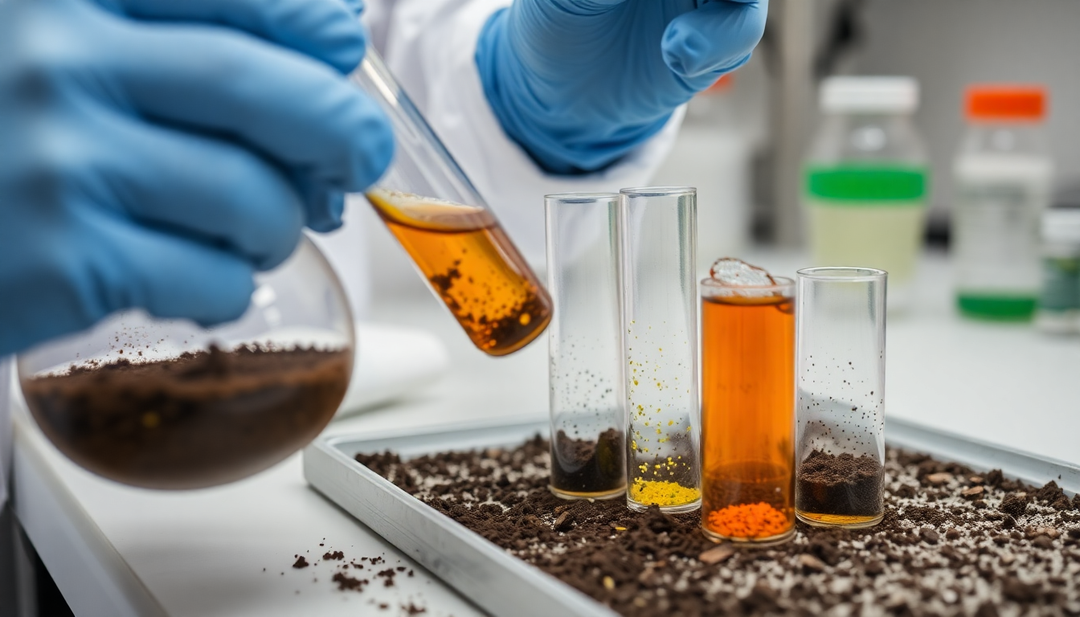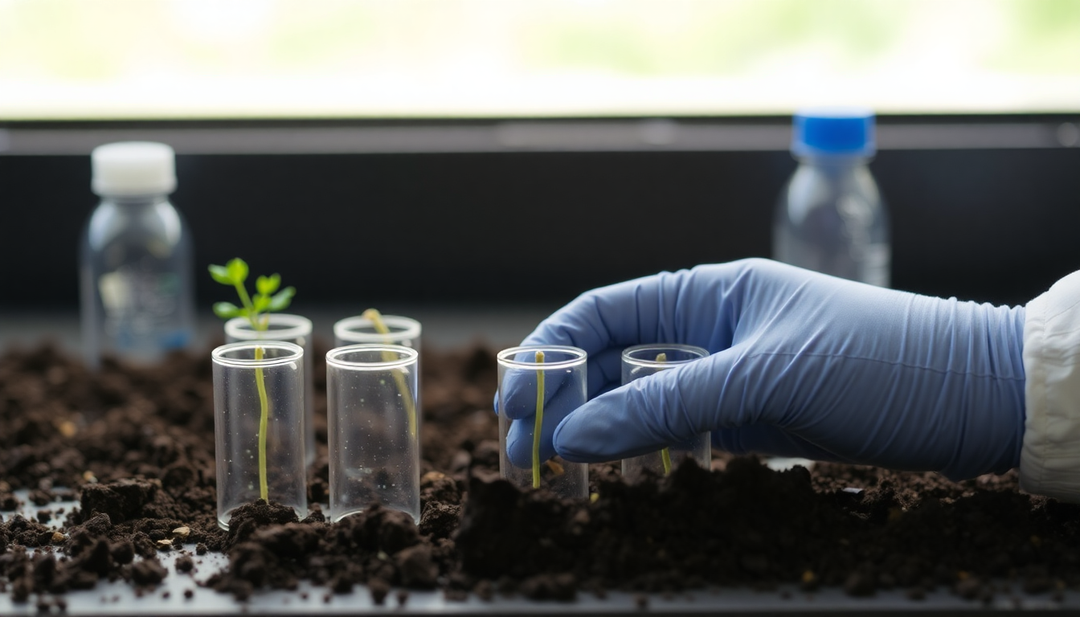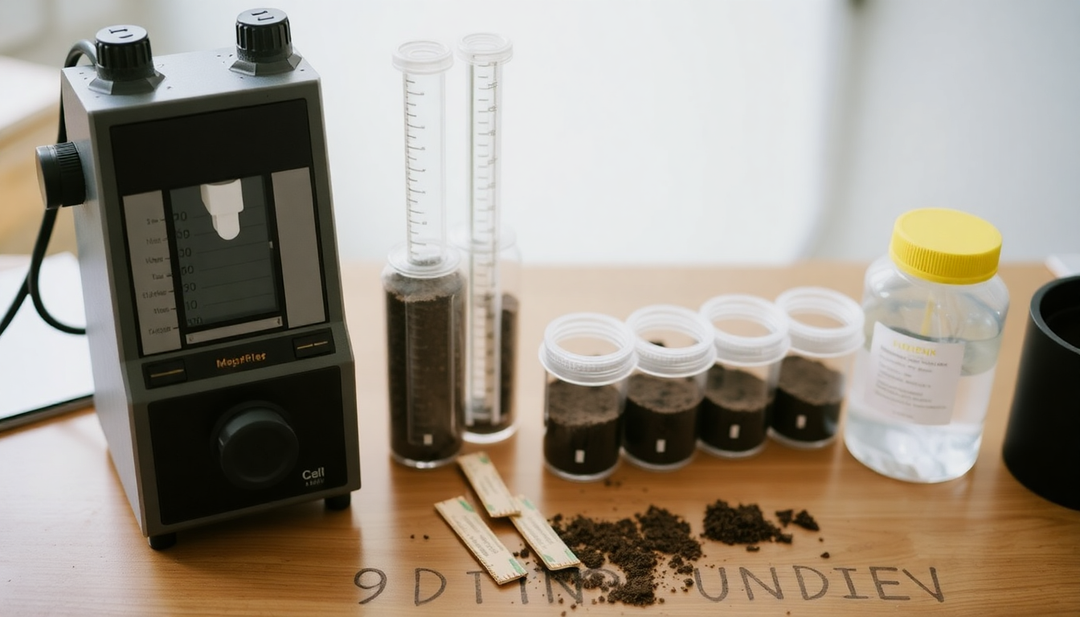Soil Analysis in 2025: Assessing the Risks of Pollution by PCBs, PAHs and Heavy Metals for a Healthy Environment

Introduction
In 2025, the need for soil testing to assess pollution risks is more crucial than ever. Pollutants such as PCBs, PAHs, and heavy metals threaten our environment and health. This article aims to explore the importance of soil testing, the diagnostic process, and practical tips for ensuring a healthy environment. We will also look at illustrative case studies and the latest trends in regulations and technology in the field of soil testing.
The Importance of Soil Testing
Soil testing plays an essential role in protecting our environment. It allows us to:
- Identify contaminants: By detecting pollutants present in the soil, we can assess their potential impact on human health and the ecosystem.
- Assess risks: A thorough risk assessment helps determine the actions needed to protect people and the environment.
- Provide accurate data: This data is essential for managing polluted sites and carrying out rehabilitation work.
- Informing the public: The results of the analyses make it possible to inform local communities about potential risks and the measures to be adopted.
The Main Pollutants to Monitor
In 2025, several pollutants will be the subject of particular attention:
- PCBs (Polychlorinated Biphenyls) : These compounds are known for their toxicity and persistence in the environment. They have been used in various industrial products, and their elimination is crucial for the health of ecosystems.
- PAHs (Polycyclic Aromatic Hydrocarbons) : Often produced by the incomplete combustion of organic materials, these substances are also of concern due to their carcinogenic effects.
- Heavy Metals : Elements such as lead, mercury, and cadmium can contaminate soils and have adverse effects on human health. Their presence is often linked to industrial activities and pesticide use.
- BTEX : These volatile organic compounds (Benzene, Toluene, Ethylbenzene, Xylene) are frequent contaminants of industrial sites.
- Fluorides and Chlorides : Often associated with industrial and agricultural activities, these pollutants can affect groundwater quality.
The Diagnostic Process
The soil pollution diagnosis takes place in several stages:
- Sampling: Soil samples are collected from various locations for representative analysis. Adherence to sampling protocols is essential to ensure reliable results.
- Laboratory analysis: Samples are analyzed for the presence of pollutants such as PAHs, heavy metals, and other contaminants. Analysis methods can vary, but often include chromatography and mass spectrometry.
- Interpretation of results: The results are interpreted based on safety standards and recommendations. A detailed report is usually produced to inform stakeholders.
- Action plan: Based on the results, an action plan can be developed to address the identified pollution. This may include decontamination measures or regular monitoring.
Case Studies
Recent case studies show the impact of soil testing:
- Brownfield site: A former industrial site revealed high levels of metals in raw material, leading to successful decontamination. Through rigorous testing, authorities were able to plan the site's rehabilitation, protecting the health of nearby residents.
- Residential area: In a residential area, tests detected PAHs, leading to protective measures for residents. By informing the community, authorities were able to implement ongoing monitoring strategies.
- Use of new technologies: A study has shown how the use of drones for collecting soil samples has improved the accuracy and efficiency of analyses, while reducing human interference.
The Latest Trends in Regulation
Regulations regarding soil testing are constantly evolving. In 2025, several key changes were introduced:
- Strengthening standards: Safety standards for contaminant levels in soil have been updated, making testing even more crucial.
- Transparency: New laws require increased transparency in sharing test results with the public.
- Remediation Grants: Government programs offer grants to help finance the remediation of contaminated sites.
Practical Advice for Individuals
Here are some tips for individuals concerned by environmental analyses:
- Have your soil tested regularly: If you live near an industrial area or in a high-risk area, it is advisable to have your soil tested periodically.
- Learn about local standards: Knowing pollution standards can help you better understand the risks you face.
- Consult the experts: Call on soil analysis experts like Pouryère for accurate diagnoses and recommendations tailored to your situation.
- Participate in workshops: Engage in soil analysis workshops or seminars to better understand environmental issues.
Conclusion
In conclusion, soil testing in 2025 is essential for assessing the risks of pollution from substances such as PCBs, PAHs, and heavy metals. Through rigorous testing and increased awareness, we have the opportunity to protect our environment and ensure a healthy future for generations to come. By being proactive and taking appropriate action, we can all contribute to protecting our environment.
Call to Action
To learn more about soil testing and how to protect your environment, contact Pouryère today. Don't let pollutants compromise your health and that of your community. Together, let's build a healthier future.



